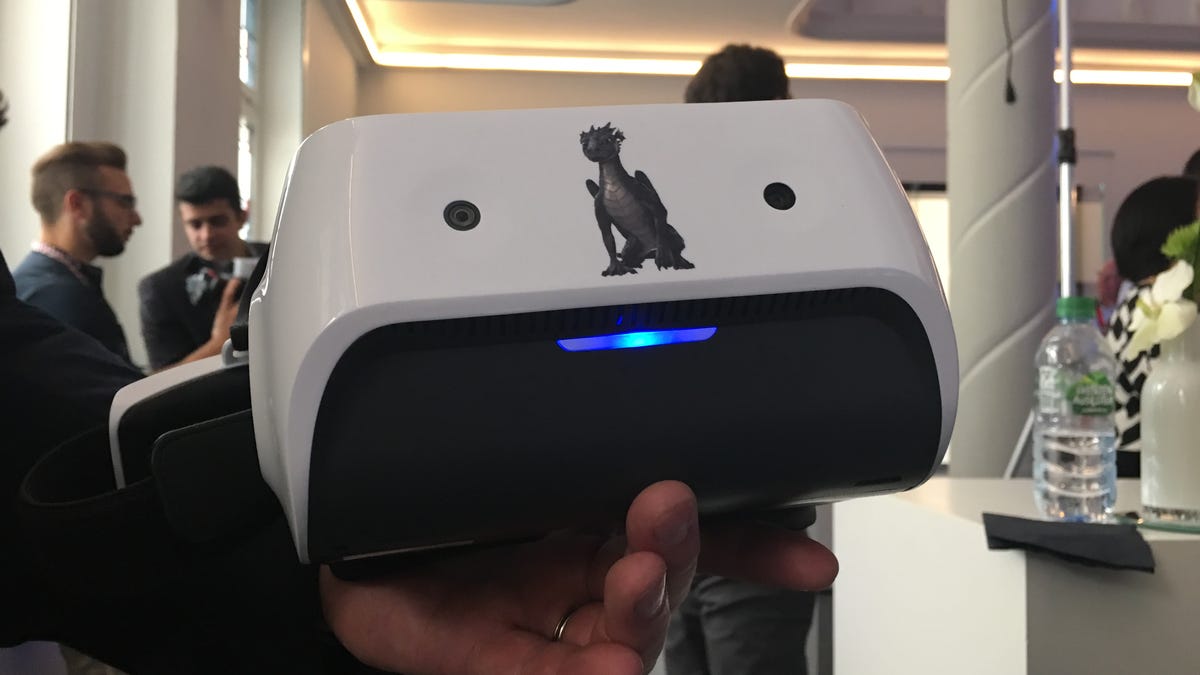Qualcomm's wild VR headset gives you freedom of motion -- without wires
Sadly, the Qualcomm unit is a reference design created to help other companies build their own affordable VR headsets. It will go to manufacturing partners in the fourth quarter.

The good news: Qualcomm may have built the Goldilocks version of a virtual-reality headset.
The bad news: You won't ever be able to buy it.
The virtual-reality experience has largely split into two categories. There's the superslick (and superexpensive) experience with the $600 Oculus Rift and the $800 HTC Vive, which require dedicated, and powerful, PCs. Then there's the more affordable experience from headsets that use the phone to power the visuals, like Samsung's $99 Gear VR.
Qualcomm is just the latest to jump into the virtual-reality business, a burgeoning area that's drawn everyone from Samsung to Facebook. The tech industry is eager to crown it the next big thing, and early adopters are fascinated by its ability to transport you to new digital worlds.
Qualcomm is trying to find a middle ground between the high- and low-end experiences. Its headset uses mobile technology, including Qualcomm's Snapdragon VR820 chip, for portability. It doesn't require wires. Because all the components are in the headset, there's no need for a separate PC. Though it's an early unit, the battery lasts about two hours.
Similarly, Alcatel unveiled the Vision, a wireless VR headset. Unlike the Vision, Qualcomm's headset lets you walk around or duck underneath virtual objects, giving off the more immersive feel that the HTC Vive is known for.
Sounds great, right? Unfortunately, it's just a reference design Qualcomm created as a platform for other companies to build on. The company has done the labor of building a working prototype and will let its partners customize and tweak the final product. Qualcomm plans to ship the reference design in the fourth quarter, and Hugo Swart, head of the company's home entertainment business, said he expects commercial devices to launch early next year.
"We couldn't just build a board," Swart said, a reference to the simple Snapdragon VR820 chip. "We needed to show a real device."
Qualcomm did exactly that, showing the device off at the IFA press conference in Berlin on Thursday.
I had a chance to try out the headset, and its ability to put me in a room that I could walk around in blew me away. There were two demos. One displayed a simple digital octopus you could walk around and underneath. A second put you in a dungeon where a fire-breathing dragon scampered and flew around you, complete with audio that moved in sync with the imagery.
Though the graphics aren't as slick as those of the HTC Vive, I felt the same kind of freedom when moving around. One edge is the lack of power or PC cables. The Vive uses two sensors placed on opposite sides of a room to create a virtual perimeter for its system. The Qualcomm headset uses four cameras -- two facing forward and two facing inward -- to track your motion and your eye movement. At first glance, it appears to be a much simpler setup.
The reference design opens up the possibilities, allowing a company that can't afford the research and development resources to building a VR headset to easily use this as the basis for a product. "This effectively lowers the barriers to entry," said Anthony Murray, head of Qualcomm's internet of things division.
Qualcomm isn't the only one offering reference designs. Intel showed off Project Alloy at its developer conference last month. It too eschewed wires and used RealSense cameras to detect your hand and arm motions.
While Qualcomm provided the brains with its Snapdragon chip, it used displays from Samsung. Goertek built the headset itself. The device runs on Android M, known as Marshmallow.
Murray wouldn't comment on the price, but a product manager said the headset could cost the manufacturing partners about $600. The manager noted the consumer price could be in the $500 to $600 range.

